Life only happens once. There is no director yelling “Action!” or “Cut!”, there is no script and no retakes. Blink and you’ll miss it. As a videographer, the task of capturing all the beautiful chaos of life and trying to distil it down to one video is both massively daunting and a huge privilege.
I’ve been doing videography in some form or other since as far back as the late 2000’s when I’d use either my Nokia N82 (great phone!) and then my Flip Mino HD to film trips to Barcelona, Paris and New York then later cut them into little vlogs. Right from the jump what I did was always a bit different and people would note how my use of editing and cutting to music was a kind of half-step between your standard holiday vid and sometimes a little more creative and entertaining.
Videography vs Film Making
Despite the huge degree of multi-tasking and multi-disciplinary work that it involves, videography does not get the respect I feel it deserves. It’s a bit like painters vs painter decorators – introduce yourself as a painter and you are regarded as a skilled artist, but the moment the additional skill of decorating is introduced your credibility goes out the window. God bless my old Grandfather. But if you want to sound cool then call yourself a film-maker. You can impress people by pretending you’re M. Night Shyamalan, though you’d be surprised by the number of “filmmakers” I’ve talked to who have never actually made any films.
I have been both a videographer and have made short films, but what is the difference between videography and filmmaking? I kicked this question around amongst my peers and we came to this conclusion – that videography is very much a one-player game whilst filmmaking is more of a team sport. Generally speaking when you are film making you do so with a team of people and when you’re doing videography you work alone. As with everything there are exceptions to the rule. For example, there are numerous documentaries where the cameraman is also the filmmaker with little or no help needed. A great example of this is one of my favourite documentaries of all time “Dark Days” (2000) by Marc Singer who befriended and filmed the train tunnel dwellers beneath New York, though even in that case he had help in editing. Likewise, you also get very fancy weddings that employ whole crews to film – but the outcome isn’t necessarily a “film” exactly.
A filmmaker could mean a number of things. It could mean a producer or a director with neither role requiring them to ever touch a camera. Likewise, a camera operator is just a guy working a camera. That doesn’t make a film either. A videographer on the other hand has to carry responsibility for the entire weight of the project on their shoulders and in real time.
Assurance vs Artistry
The videographer has to work hard a being the jack of all trades and there is also the tendency towards live. Because of this, there can be a shift towards assurance over artistry, certainly at the filming stage.
Filmmakers generally have total control to direct what they are filming to an absolute degree. You might have a controlled set with actors and lights set just so, the focus set just so and the entire routine of a scene or even a shot all pre-mapped out. Because of that, you can push things in terms of the pursuit of artistry. You know that you can set up the scene like that because you know exactly what is going to happen and when. You can use a wide aperture for a more cinematic look and have a focus puller working to make sure the focus can perfectly move between the faces of the subject of interest.
Videographers in live situations don’t know exactly what is going to happen so you generally need to avoid filming in such a way that risks missing something important even if this could potentially mean some compromise on the overall look. This is the reason why live news reports look totally different to a film – because the general aim of live news reports is to capture whatever is going on that day in whatever setting with an aim to report in an as plain and neutral way as possible so not to favour or influence the news story. A film on the other hand is artificial and will focus heavily on how to manipulate the various aspects of the film in order to guide or affect storytelling.
How to be more successful in cinematic videography
Whenever I speak to potential videography clients I am clear to point out that I’m not “Gary the bloke with the camcorder”. There are hacks like that out there who buy a bunch of camera gear, stick it all to auto, point, shoot, and hand over the footage. They suck and their videos suck. In fact, I even got hired one time to re-edit one of these phoned-in atrocities…
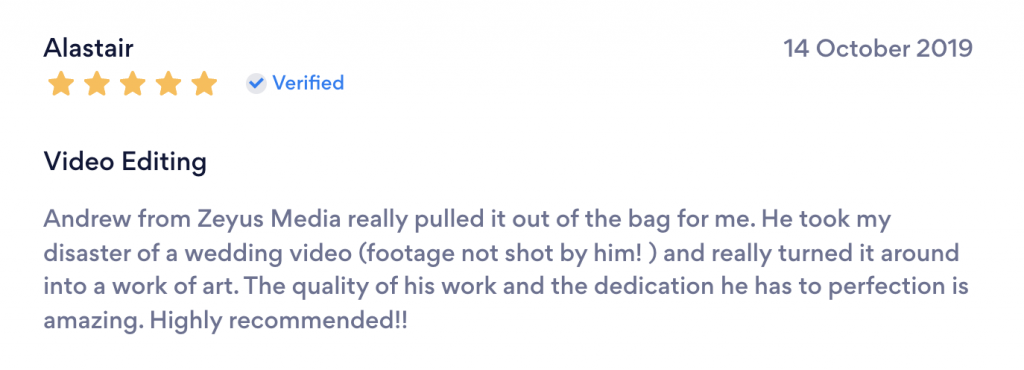
What gives my own work its edge is that I will push that little bit harder to not just capture a moment but for that moment to feel cinematic. This is not easy at all. It is very much like setting the game into hard mode to give you that extra bit of punishing challenge. In fact, I would go as far as to say, attempting cinematic-style videography if you aren’t 100% confident in what you are doing is a terrible idea. “Do not try this at home” kind of bad idea. For me, I find the outcome is worth it, but I try to keep things manageable by employing a few strategies.
Pre-Planning: Obviously real life is unplanned and unscripted so there is a limit to what can be planned, but sometimes there are sets of variables we can lock down in advance and routines we can anticipate. For example, in the case of a wedding, it is possible to anticipate, with some degree of accuracy, where people will move/sit/stand and so we can begin to plan exactly where the fixed camera can go and exactly where to lock off the focus in order to perfectly centre in on the subject, as well as choreographing camera movement like it was a dance, in the exact same way I would with a one-shot music video. This usually means visiting the location and walking through everything with the subjects beforehand, sometimes even diagrams on camera placements and movements. not only does pre-planning enable far more interesting possibilities than just ‘Gary Camcorder’ standing there filming from the most pedestrian angle, but pre-planning also makes everything so much easier and stress-free once we go live.
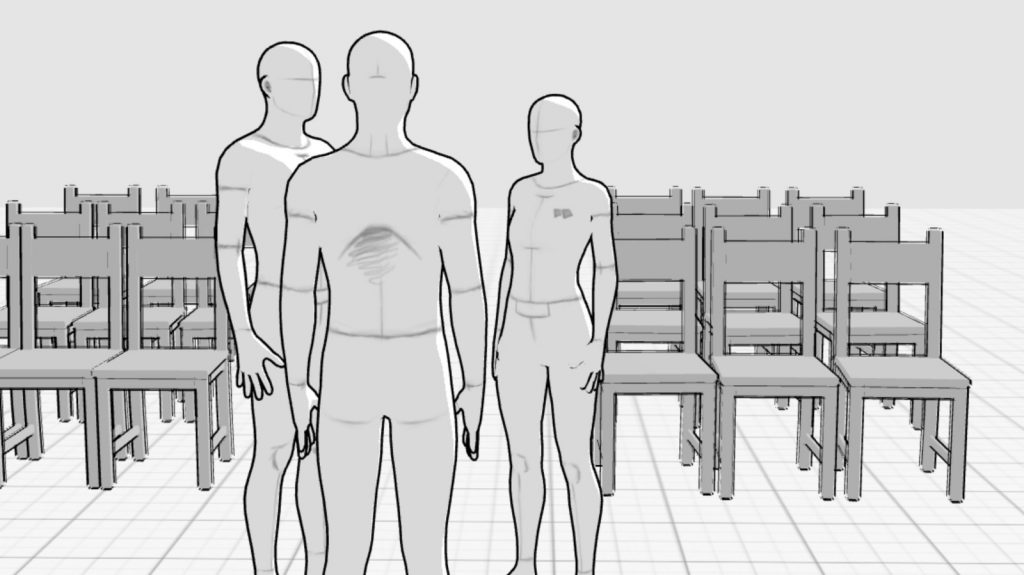

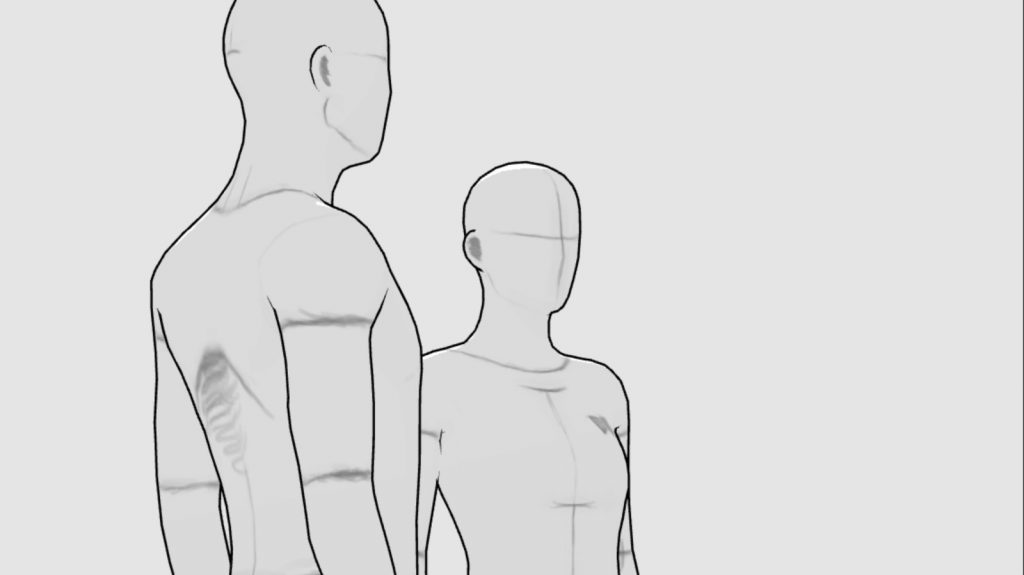
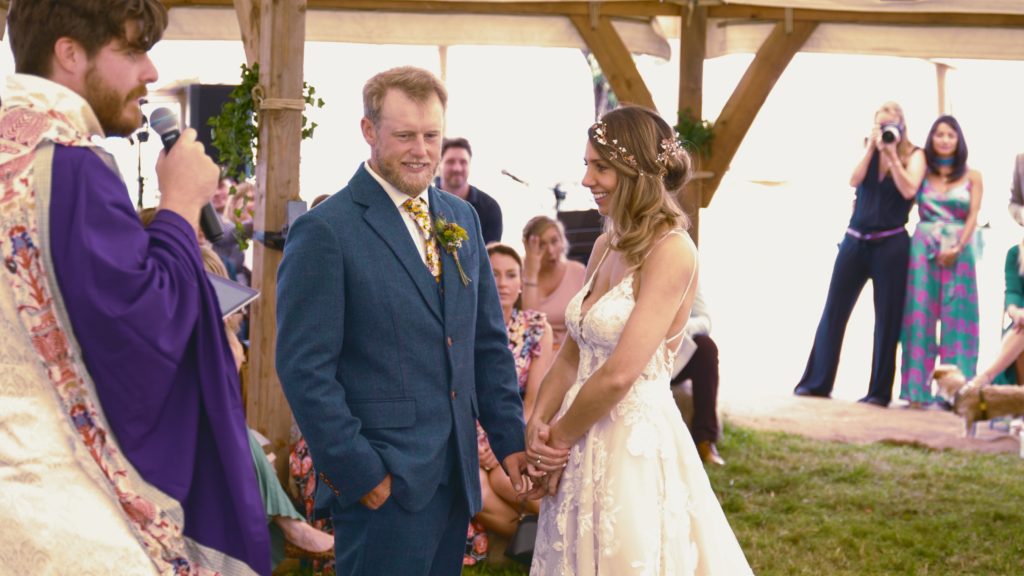
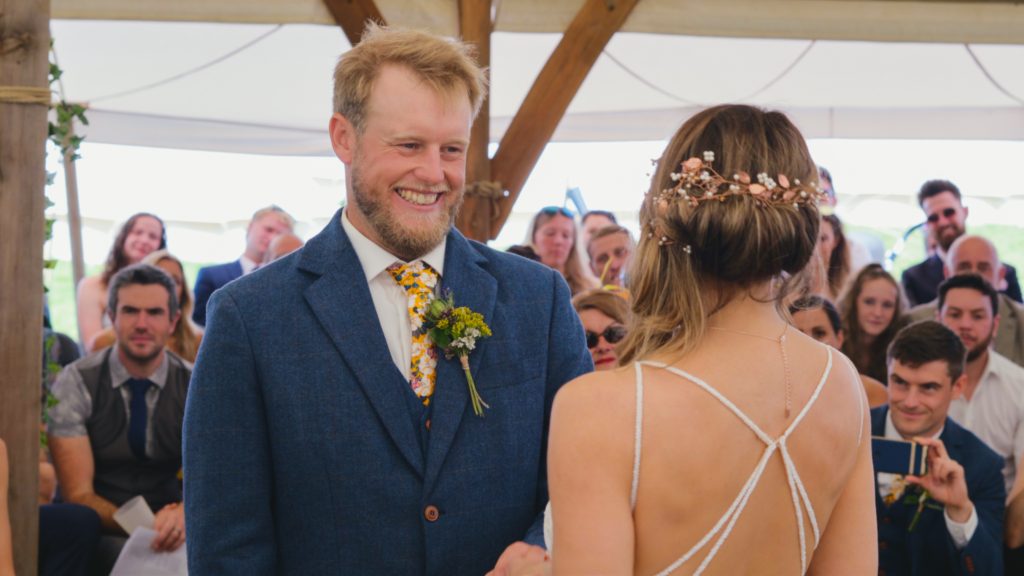
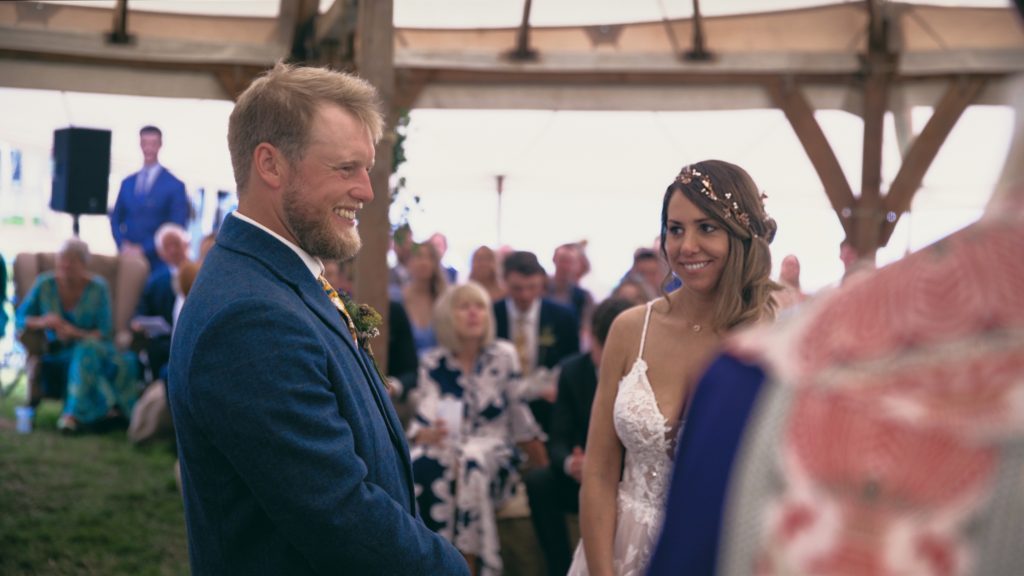
Plate Spinning: At my most basic I shoot run & gun with my RS2 for stabilisation. This is how I achieve the body of my more artistic shots. Since cutting my teeth on filming music gigs I always try to film in such a way that any take in its entirety should be usable enough to stand on its own, though sometimes I do need to make fast changes to catch some action. Occasionally there are moments in transitioning between subjects where, be it due to focus, exposure, movement/shake or framing, I’ll be missing the action. In these cases, I will have a least one additional safety camera, usually in a medium or wide shot setup, which I can cut back to and bridge the gap.
Additional cameras are where you start plate spinning. Some DSLRs can only film continuously for 30 minutes and battery operation can vary. So not only am I working to capture the moment, but every now and then I need to do a sweep to check that all cameras are rolling properly. Automation can help massively when spinning plates. The drones I use have smart AI flight programs allowing them to orbit and track a subject autonomously and then land themselves when their batteries run low, but as a responsible drone pilot, it remains my responsibility to have eyes on the drone at all times to ensure safe operation. I also use motorised sliders and gimbals which can be controlled remotely meaning I can set these cameras running securely in the knowledge that they will capture something usable.
Automation also applies to autofocus of which there are many modes. Face tracking and zone focus in particular comes in useful when I know the subject will be stepping into that particular region on the frame. For example, a camera set facing down the aisle at wedding will automatically lock in on and track the bride walking up the aisle leaving me free to get more close and creative shots from an alternative angle. Then there are the fail-safes, some kind of wide or medium shot with a slightly more narrow aperture so that if my risks don’t pan out, I will always have the one shot to fall back on. Going back to my beginner’s guide to editing, these fail-safes will usually act as the biscuit base in my ‘cheesecake’ technique.
Awareness: Managing the plate spinning requires a level of awareness that is focused on processes (e.g checking and changing batteries, SD cards, drone safety etc…). But on top of this process-based awareness, I also need to remain aware of different cues. For example, when filming a band I need to follow rhythm and musical cues to know when to shift focus from the strings of a guitar solo or drum fill to the face of the lead vocalist. Sometimes there are social cues that tip me off as to where in a room I will find the best action. There are also emotional cues that show which person is about to smile/cry etc… So when I am at an event with hundreds of people I have to really switch into a higher “terminator mode” of operating as I am constantly scanning the room for cues.
Maximum Flexibility: To give myself the best chance of my risks working out I try to give myself the most flexibility in filming. As a general rule, whenever I’m filming non-sync (i.e there is no need for synchronous audio recording), I film at a frame rate of 50fps and a shutter of 1/100sec giving me the option of slow-motion and variable speed editing in post. A little motion blur can always be added back in post if need be. Where I can, I also opt for higher resolutions allowing for a little extra headroom in the frame that will enable me to reframe and tighten up shots in post. I also shoot in colour profiles like SLOG-2 and CINE-4 unless in very dark conditions where I’ll switch to a custom low-light profile. This allows more flexibility with the look in colour grading.
Direction: In terms of direction I veer towards observing the subject in stealth mode so the moments I capture feel more natural. There are also moments for a spontaneous or candid nod to the camera. In these cases I use a focal length of between 50-80mm, approaching the subject in the frame of portraiture. Then there are certain times when I will actively direct the subjects. Having done over 200 interviews with my old health and fitness blog I’ve gotten fairly used to helping people to feel and act natural on camera. My approach is always to make everything as fun as possible and to communicate in the most simple and easy terms what they need to do to get the coolest shots. For example, this can be as simple as me shouting “Dance!”, or if it’s a walk shot I’ll say something like “Imagine you’re about to make your entrance on “Celebrity Love Island”, you’re looking sensational and you’re about to give your evil-ex the shock of their life” and then kaboom!
Yes, filmmaker might sound cool and sure, I love the opportunity to invest some time into a story or in getting the perfect shot. But I also love the opportunity to capture memories of the cool moments in people’s lives and give them their rockstar moment. If you would like me to film your event please feel free to get in touch for a quote.
